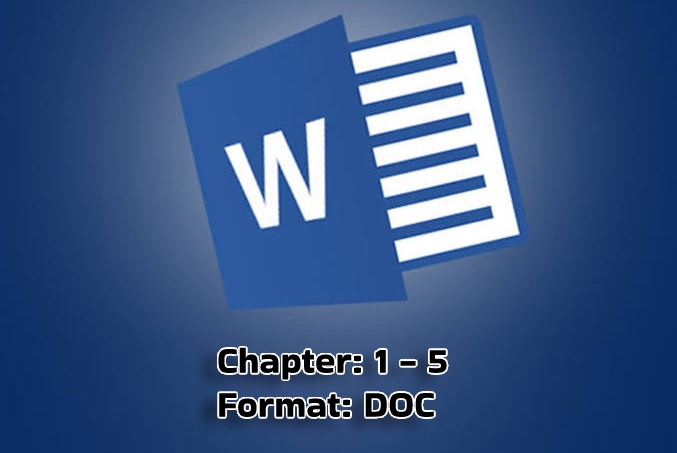Description
CHAPTER ONE
1.0 INTRODUCTION
1.1 BACKGROUND OF THE STUDY
A landfill site is a site for the disposal of waste materials by burial. Landfill is the
oldest form of waste treatment, although the burial of the waste is modern;
historically, refuse was simply left in piles or thrown into pits. Historically, landfills
have been the most common method of organized waste disposal and remain so
in many places around the world.
Some landfills are also used for waste management purposes, such as the
temporary storage, consolidation and transfer, or processing of waste material
(sorting, treatment, or recycling). Unless they are stabilized, these areas may
experience severe shaking or soil liquefaction of the ground during a large
earthquake.
Municipal solid waste landfills (MSWLFs) receive household waste. MSWLFs can
also receive non-hazardous sludge, industrial solid waste, and construction and
demolition debris. Modern landfills are well-engineered facilities that are located,
designed, operated, and monitored to ensure compliance with federal
regulations. Solid waste landfills must be designed to protect the environment
from contaminants which may be present in the solid waste stream. The landfill
siting plan prevents the siting of landfills in environmentally-sensitive areas while
on-site environmental monitoring systems monitor for any sign of groundwater
contamination and for landfill gas, and provides additional safeguards. In addition,
many new landfills collect potentially harmful landfill gas emissions and convert
the gas into energy.
This chapter provides a comprehensive but brief discussion on all aspects
associated with landfill design, construction and operation. Siting, regulations and
other important steps that need to happen before design stage are also presented
in brief. Information on monitoring and post closure requirements is discussed at
the end of the chapter. It should be noted that discussions provided on landfill
design are qualitative as they do not include detailed designs.
1.2 PROBLEM STATEMENT
The world population has more than doubled since 1960. If you take 1950 as the
base year then the population has grown from 2.5 billion to 7.5 billion. Thousands
of cities have been developed in the same time and millions of small villages have
been developed in clusters as townships. With such an unprecedented expansion,
there has been a crisis, that of waste management which is controlled by landfills
site. A landfill site is a site for the disposal of waste materials by burial.
1.3 AIM OF THE PROJECT
The main aim of this project provides a comprehensive discussion on all aspects
associated with landfill site and its design.
1.4 OBJECTIVES OF THE PROJECT
At the end of this work student involved shall be able to discuss the following
subjects: landfill design, construction, and operation. It presents sitting
considerations, regulations, and other important steps before the design stage.
1.5 SIGNIFICANCE OF PROJECT
This paper introduces some of the most common end uses of landfills, discussing
advantages and applicability of alternatives to different landfill sites and presents
case studies emphasizing successes and challenges for post-closure end uses.
Engineering considerations for topics discussed are presented to provide
preliminary insight to what issues may be faced when choosing what to do with a
landfill post-closure. The presentations of each topic in this paper are not
comprehensive due to the unique nature of each landfill project. Case studies are
helpful to look at because every landfill project is unique, so creative solutions are
developed specific to each project.
1.6 SCOPE OF THE PROJECT
Landfills pose a number of environmental and social issues while in operation
which are regulated by EPA (environmental protection agency), state
governments, and local municipalities. However, the way the land is used after
the landfill reaches its capacity is an important long-term consideration for the
owners of the landfill and the communities surrounding them. As the population
density in an area continues to increase, the value of reclaimed land occupied by
landfills also increases. According the EPA (2014), and as demonstrated in many
case studies, the long-term end use of a landfill should be considered in the
original design, or at least early in the life of the landfill. Poor planning can lead to
costly redesign and extra work in terms of grading and drainage planning, cover
design to support foundations, gas collection and control systems, settlement
mitigation, and more. Thus, foresight on how the land will eventually be used can
save project owners significant funds.
1.7 ADVANTAGES OF LANDFILL SITES
1. Landfills are convenient to use: They don’t need the waste to be transported
from its source where it is generated to another distant or remote area where it
would be dumped. The cost of transporting humongous waste, especially from
large cities to remote regions of the country can run into millions in a year. The
fact that the peripheral areas of most metropolises and even suburbs have
become developed and cannot have landfills further complicates the challenge.
2. Landfills can use the waste generated in a city, town or district and produce
energy: There can be confined landfills that are not exactly next to human
habitation or farmland and can be safely used in an eco friendly way to generate
energy that can power the needs of the facility and the locals. The carbon dioxide
and methane exuding from landfills can be harnessed to generate power. This
also reduces the quantum of the waste present in landfills.
3. Landfills can keep cities, towns and districts clean: Any region that doesn’t
have a landfill or when the habitants know there is no efficient waste
management system in place, the people would simply litter the roads, throw
waste anywhere they feel like and dump large waste the nearest vacant lot they
get that is not under surveillance.
4. Landfills are relatively safer than other waste management and disposal
techniques.: Incinerators in particular are hazardous for their toxic byproducts.
Landfills have their share of risks but not as major ones as other options.
1.8 DISADVANTAGES OF LANDFILL SITES
1. Toxic waste continues to pileup.
The most concerning problem of landfills is the toxic waste in the pileup will blend
with the water or snow, when it rains or snows, and that can flow out of the
landfill, contaminate ground water, damage crops and can cause serious health
problems.
2. Methane is a concern.
It is fatal for humans and can cause significant damage to our eco-system.
Methane can cause chronic and terminal diseases. It can also light up easily and
entire landfills can be on fire in no time.
3. Dust, pollution and particulate matter would emanate from landfills.
Most landfills are open. The toxic waste would exude gases. There will be dust
and all kinds of microbes as well as heavy metals.

